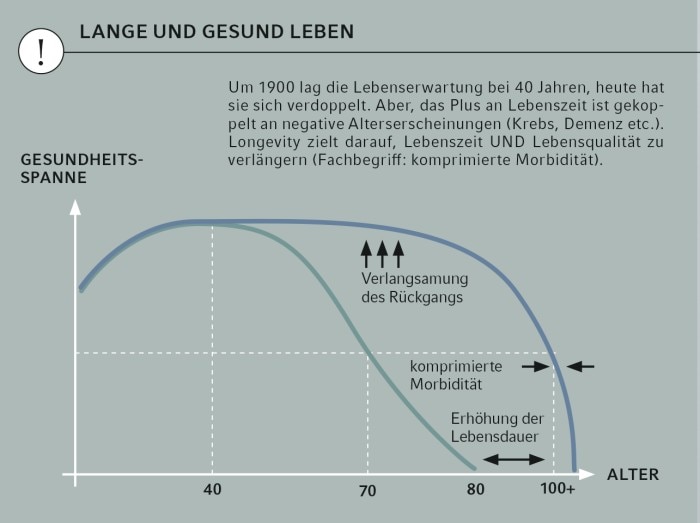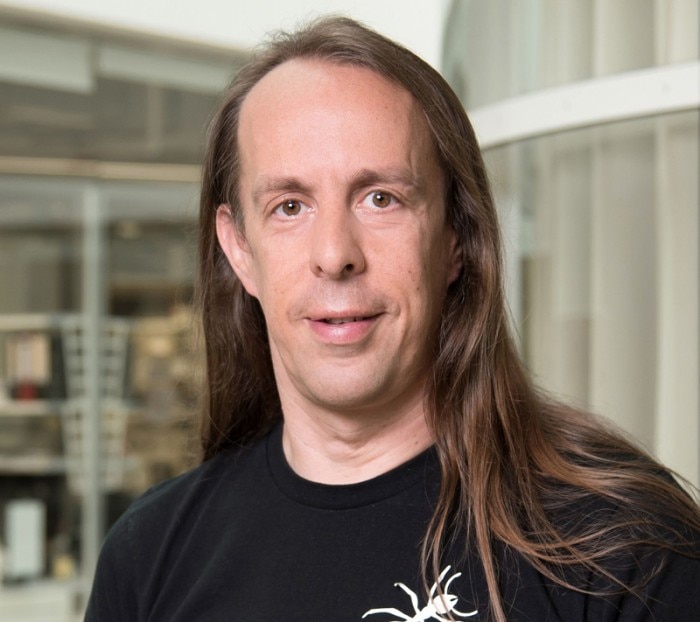MENU
PT | EUR
-
- Benchtop Centrifuges
- Floor-Standing Centrifuges
- Refrigerated Centrifuges
- Microcentrifuges
- Multipurpose Centrifuges
- High-Speed Centrifuges
- Ultracentrifuges
- Concentrator
- High-Speed and Ultracentrifugation Consumables
- Accessories
- Tubes
- Plates
- Device Management Software
- Sample and Information Management
- IVD Products
PT | EUR
-
- Benchtop Centrifuges
- Floor-Standing Centrifuges
- Refrigerated Centrifuges
- Microcentrifuges
- Multipurpose Centrifuges
- High-Speed Centrifuges
- Ultracentrifuges
- Concentrator
- High-Speed and Ultracentrifugation Consumables
- Accessories
- Tubes
- Plates
- Device Management Software
- Sample and Information Management
- IVD Products
myEppendorf
No results found
Search Suggestions

The Quest for Eternal Life
Beyond Science
- Cell Identity
- Off the Bench
- Inspiring Science
Longevity is more than just a trend. It is a field of research which increasingly takes center stage – particularly in the US. Are dreams of rejuvenation via biotech close to becoming a reality?
In the industrial countries of the West, life expectancy has doubled within the past 120 years. Thanks to medical progress, previously lethal infectious diseases such as smallpox have been conquered. Today, more than half a million people are alive on Earth who have broken through the magic barrier of 100 years of age, and in 2020, more than 20,000 centenarians were counted in Germany alone. A French woman named Jeanne Louise Calment holds the age record: she lived to be 122 years and 164 days old. The oldest man in the world was Saturnino de la Fuente García from Spain; he died in early 2022 at the age of 112.
Read more
Read less

Determining the age of cells
Indeed, despite all the advances and expertise, human performance begins to decline at age 30 – on average one percent per year of life. But why do some people age faster than others? And how can science even measure the age of a cell? For the longest time, the credit went to telomeres – the ends of chromosomes which tend to fray after a certain number of cell divisions. Telomere data, however, were not quite accurate enough. In 2013, Steve Horvath of the University of California, Los Angeles discovered the “epigenetic clock”, which is able to accurately determine age within a range of 3.6 years: a milestone for scientists.
Age in and of itself is of course not a disease – which is why clinical trials of any agent that only aims to prolong life may not be approved. Old age, however, is generally accompanied by numerous maladies. The last phase of life is often plagued by age-related illnesses such as diabetes, cardiovascular disease, dementia or cancer. Does it have to be so? It is a fact that more and more prominent and powerful investors, including, for example, Google co-founder Larry Page, Paypal founder Peter Thiel and Amazon boss Jeff Bezos, invest in research companies like the California startup “Altos Labs”, which has raised over 270 million dollars in the hope of beating age at its game.
Sales of longevity products are on the rise
The sector benefits from the method of “biologic reprogramming” which has already allowed the rejuvenation of ageing cells in the laboratory. In an interview (page 14), gerontologist Dr. Sebastian Grönke explains how it works, as well as some of the drawbacks specific to how the method is applied to the human species. The transformation of cells using genetic factors, however, is not the only method – research companies like “Neteos” in Germany, as well as “Alkahest”, “Life Biosciences” and “Turn Biotechnologies” in the United States, are working to turn the wheels of time with the help of blood plasma. The dream of a long and healthy life is boosting business. In 2021, “Business Insider“ predicted revenues of 216 billion US dollars, up from 2015 revenues of slightly less than 140 billion dollars.
In the lab, eternal youth is studied using fruit flies and nematodes, as well as the vertebrate species killifish, and mice. Approaches where older killifish received transplanted intestinal bacteria from younger members of the same species are promising, and young blood plasma gave nematodes back their fitness and flexibility. In addition, the administration of anti-inflammatory and rejuvenating proteins led to improved memory function. While such experiments are impressive, human benefit remains uncertain.
According to the expert opinion of Sebastian Grönke, two additional options are beginning to take shape: “In the laboratory, we achieved life extension for flies of 30 to 40 percent using a combination of two cancer drugs and lithium.” The advantages: the drugs are already approved, and cancer is considered to be one of the age-associated diseases. Apparently, it is the combination that makes the difference, as “one substance alone achieved a maximum of 10 percent life extension.” Initial US Studies testing the diabetes drug metformin in humans are expecting similarly encouraging results.
On a strict diet
Science agrees on the fact that the influence of genes on longevity is comparatively small, at only 10 to 15 percent. Lifestyle is key. Dr. Sven Voelpel, Professor of Business Administration at Jacobs University in Bremen, Germany, known for his books including “Decide for yourself how old you are” (“Entscheide selbst, wie alt du bist”), wants to employ behavioral correction in order to come closer to a fountain of youth formula. Grönke’s animal experiments, too, point in a similar direction: the rodents lived longer with intermittent fasting and a carbohydrate-rich diet. Grönke’s team puts mice on a diet: the animals receive only 60 percent of their customary portions – once per day. This measure alone prolonged their life spans by 30 to 40 percent.
Indeed, despite all the advances and expertise, human performance begins to decline at age 30 – on average one percent per year of life. But why do some people age faster than others? And how can science even measure the age of a cell? For the longest time, the credit went to telomeres – the ends of chromosomes which tend to fray after a certain number of cell divisions. Telomere data, however, were not quite accurate enough. In 2013, Steve Horvath of the University of California, Los Angeles discovered the “epigenetic clock”, which is able to accurately determine age within a range of 3.6 years: a milestone for scientists.
Age in and of itself is of course not a disease – which is why clinical trials of any agent that only aims to prolong life may not be approved. Old age, however, is generally accompanied by numerous maladies. The last phase of life is often plagued by age-related illnesses such as diabetes, cardiovascular disease, dementia or cancer. Does it have to be so? It is a fact that more and more prominent and powerful investors, including, for example, Google co-founder Larry Page, Paypal founder Peter Thiel and Amazon boss Jeff Bezos, invest in research companies like the California startup “Altos Labs”, which has raised over 270 million dollars in the hope of beating age at its game.
Sales of longevity products are on the rise
The sector benefits from the method of “biologic reprogramming” which has already allowed the rejuvenation of ageing cells in the laboratory. In an interview (page 14), gerontologist Dr. Sebastian Grönke explains how it works, as well as some of the drawbacks specific to how the method is applied to the human species. The transformation of cells using genetic factors, however, is not the only method – research companies like “Neteos” in Germany, as well as “Alkahest”, “Life Biosciences” and “Turn Biotechnologies” in the United States, are working to turn the wheels of time with the help of blood plasma. The dream of a long and healthy life is boosting business. In 2021, “Business Insider“ predicted revenues of 216 billion US dollars, up from 2015 revenues of slightly less than 140 billion dollars.
In the lab, eternal youth is studied using fruit flies and nematodes, as well as the vertebrate species killifish, and mice. Approaches where older killifish received transplanted intestinal bacteria from younger members of the same species are promising, and young blood plasma gave nematodes back their fitness and flexibility. In addition, the administration of anti-inflammatory and rejuvenating proteins led to improved memory function. While such experiments are impressive, human benefit remains uncertain.
According to the expert opinion of Sebastian Grönke, two additional options are beginning to take shape: “In the laboratory, we achieved life extension for flies of 30 to 40 percent using a combination of two cancer drugs and lithium.” The advantages: the drugs are already approved, and cancer is considered to be one of the age-associated diseases. Apparently, it is the combination that makes the difference, as “one substance alone achieved a maximum of 10 percent life extension.” Initial US Studies testing the diabetes drug metformin in humans are expecting similarly encouraging results.
On a strict diet
Science agrees on the fact that the influence of genes on longevity is comparatively small, at only 10 to 15 percent. Lifestyle is key. Dr. Sven Voelpel, Professor of Business Administration at Jacobs University in Bremen, Germany, known for his books including “Decide for yourself how old you are” (“Entscheide selbst, wie alt du bist”), wants to employ behavioral correction in order to come closer to a fountain of youth formula. Grönke’s animal experiments, too, point in a similar direction: the rodents lived longer with intermittent fasting and a carbohydrate-rich diet. Grönke’s team puts mice on a diet: the animals receive only 60 percent of their customary portions – once per day. This measure alone prolonged their life spans by 30 to 40 percent.
Read more
Read less
Interview

“Biological Reprogramming” plays a major role within age research. Dr. Sebastian Grönke, molecular biologist at the Max Planck Institute for Biology of Ageing in Cologne, explains the rejuvenation method and its pitfalls.

Is the concept of reverse ageing a breakthrough for age research?
Dr. Sebastian Grönke:It is absolutely a novel approach, although its effects will need to stand the test of time. Interestingly, rejuvenation of older cells was not only achieved in the lab, but it was also accomplished in mouse studies. However, these were progeria-mice – especially short-lived mice whose life-spans could thus be extended. The gold standard is of course proof in the wild mouse, which is still pending.
In any case, “Ärzteblatt” has published an article entitled “Stem Cell Genes as Rejuvenation Treatment for Mice”. How does the method of “biological reprogramming” work?
Almost ten years ago, Shinya Yamanaka was the first to show that it was possible to harvest an ageing body cell – for example, a skin cell – via biopsy and subsequently rejuvenate it in the laboratory. This was made possible by the discovery of four factors which are highly expressed in the very early stages of development. In short, these are four genetic transcription factors named Yamanaka factors, after the person who discovered them. If these are activated in adult cells, the cells can then be transformed back into artificially induced embryonic cells, and we refer to them by their scientific term, “induced pluripotent stem cells (iPSCs)”.
Sounds complicated …
The idea behind it is simple. If one enriches the skin cells with the four Y factors over a period of 15 days, a process will be initiated inside the cells, the term for which is indeed “reprogramming” – the former skin cell becomes a stem cell once again. Within the context of ageing, however, complete transformation is not intended; as an embryonic cell, the thus reverted skin cell can no longer function as a skin cell. If, however, one initiates the genetic program using the Y factors and subsequently stops it after four or five days, the skin cell will rejuvenate without complete reprogramming, and without losing its function. Why it rejuvenates, however, is not yet completely understood.
Initially, the thus rejuvenated mice suffered the side effect of tumor growth – not a promising outlook for humans.
This problem has been solved – no further tumors have developed in current studies. Human cells were even successfully removed from elderly people and rejuvenated. In the case of humans, this process is of course carried out ex vivo, meaning, in cell cultures. The conclusion: It also works in humans – at least in theory. The big question remains: how can this method be applied to the human organism? In the case of mice, experiments were carried out on a transgenic mouse: the Y factors had previously been integrated into its genome in such a way as to allow their experimental activation. This, of course, is not possible for humans as ethical considerations forbid genetic alterations.
Dr. Sebastian Grönke:It is absolutely a novel approach, although its effects will need to stand the test of time. Interestingly, rejuvenation of older cells was not only achieved in the lab, but it was also accomplished in mouse studies. However, these were progeria-mice – especially short-lived mice whose life-spans could thus be extended. The gold standard is of course proof in the wild mouse, which is still pending.
In any case, “Ärzteblatt” has published an article entitled “Stem Cell Genes as Rejuvenation Treatment for Mice”. How does the method of “biological reprogramming” work?
Almost ten years ago, Shinya Yamanaka was the first to show that it was possible to harvest an ageing body cell – for example, a skin cell – via biopsy and subsequently rejuvenate it in the laboratory. This was made possible by the discovery of four factors which are highly expressed in the very early stages of development. In short, these are four genetic transcription factors named Yamanaka factors, after the person who discovered them. If these are activated in adult cells, the cells can then be transformed back into artificially induced embryonic cells, and we refer to them by their scientific term, “induced pluripotent stem cells (iPSCs)”.
Sounds complicated …
The idea behind it is simple. If one enriches the skin cells with the four Y factors over a period of 15 days, a process will be initiated inside the cells, the term for which is indeed “reprogramming” – the former skin cell becomes a stem cell once again. Within the context of ageing, however, complete transformation is not intended; as an embryonic cell, the thus reverted skin cell can no longer function as a skin cell. If, however, one initiates the genetic program using the Y factors and subsequently stops it after four or five days, the skin cell will rejuvenate without complete reprogramming, and without losing its function. Why it rejuvenates, however, is not yet completely understood.
Initially, the thus rejuvenated mice suffered the side effect of tumor growth – not a promising outlook for humans.
This problem has been solved – no further tumors have developed in current studies. Human cells were even successfully removed from elderly people and rejuvenated. In the case of humans, this process is of course carried out ex vivo, meaning, in cell cultures. The conclusion: It also works in humans – at least in theory. The big question remains: how can this method be applied to the human organism? In the case of mice, experiments were carried out on a transgenic mouse: the Y factors had previously been integrated into its genome in such a way as to allow their experimental activation. This, of course, is not possible for humans as ethical considerations forbid genetic alterations.
Read more
Read less
